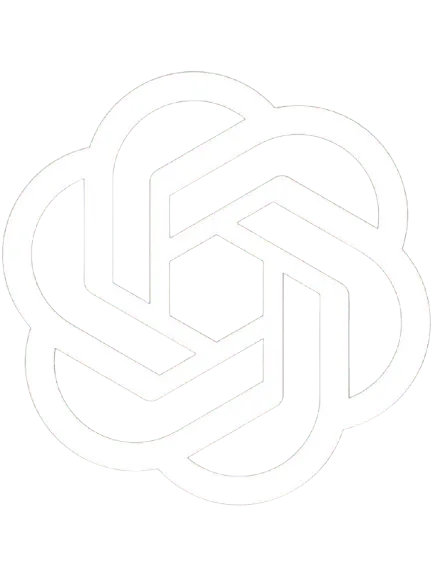Summary: This blog post explores the importance of digital SOAP notes for massage therapists, highlighting their role in improving documentation and client care. It outlines the SOAP format, detailing each section's purpose and benefits, such as tracking progress and ensuring legal protection. For those looking to streamline their documentation process, the article reviews top software options, recommending SPRY as the #1 solution for its all-in-one platform that enhances efficiency and supports best practices in massage therapy.
Recent studies show 40% of massage practices now use massage therapy SOAP note software for charting. This adoption trend shows that SOAP notes have become vital for professional practice.
Massage therapy’s SOAP notes create valuable treatment records that help therapists monitor clients' progress, develop better plans, and provide documentation for continuity of care. With liability risks high, massage therapists face claims three times more than other manual therapists; proper documentation has become non‑negotiable.
This guide gives you everything: from SOAP format basics to top software options that streamline documentation. Whether you're switching to digital notes or refining what you already use, this piece gives you templates, examples, and best practices to stay professional and protected.
What are SOAP notes in massage therapy?
SOAP notes are a standardized method for documentation used across medical and therapeutic fields since the 1960s. They ensure therapists capture each client's session with clarity and consistency:
- Subjective: What the client reports
- Objective: What the therapist observes
- Assessment: Therapist’s analysis of findings
- Plan: Recommendations for future care
By using SOAP, massage therapists organize client visits logically, maintain excellent records, track progress, and support clinical decision‑making.
Understanding the SOAP acronym
Why SOAP notes are used in massage therapy
SOAP notes offer many benefits:
- Track progress: Helps therapists and clients see improvements over time.
- Ensure continuity: Standard format makes sharing with other providers easy.
- Support insurance billing: Provides proof of treatment and outcomes.
- Legal protection: Demonstrates professional care and decision‑making.
- Customize care: Helps tailor future treatments to documented responses.
When and where SOAP notes are required
- Clinical settings demand detailed SOAP notes for compliance and continuity.
- Insurance billing usually requires them to validate claims and outcomes.
- Ongoing treatment plans, longer or repeat sessions, strongly benefit from them.
- Cash-based practices may not require SOAP by law, but they elevate professionalism and client trust.
Breaking down the SOAP format
Subjective: What the client tells you
Record:
- Chief complaint with the client’s exact words
- Symptom details: location, intensity (0‑10), frequency
- Relevant medical history and previous treatments
- Quotes in quotation marks (“...”) can enrich the record
Objective: What you observe
Document:
- Posture and movement observations
- Palpation findings: tissue texture, warmth, swelling
- Range of motion measures and strength, or orthopedic tests
- Use clear, measurable language (e.g., "limited cervical rotation to 45°")
Assessment: Your clinical opinion
Analyze:
- Progress toward goals
- Treatment effectiveness
- Any new or persisting issues
- Specific comments, such as “Myofascial release reduced neck tension by 50%”
Plan: What comes next
Include:
- Frequency and focus of upcoming sessions
- Homecare instructions (stretches, self‑massage, ergonomic tips)
- Referrals if needed
- Goals for monitoring next appointment
Digital SOAP notes: Benefits and challenges
Why go digital?
- Templates and auto-fill ease documentation.
- Accessible remotely, ideal for mobile or multi-practitioner setups.
- Eliminates physical storage hassles and reduces paper costs.
- Enhances environmental sustainability.
Common issues with paper notes
- Hard to read, easy to lose or damage
- Slow to reference, notes may sit unread
- Prone to inconsistency and misfiling
- Limited tracking capabilities
HIPAA compliance and data security
Secure electronic systems offer:
- Encryption (e.g., AES‑256)
- Access controls and audit trails
- Automatic logging out
- Permission‑based access
These safeguards often exceed the protection level offered by paper files.
Top 5 Software Tools for Electronic SOAP Notes
The right software can make SOAP documentation quicker, more consistent, and easier to manage. These platforms are tailored to massage therapists and wellness professionals, offering everything from templates to full practice management. Here's a deeper look at the top tools:
1. Sprypt

Sprypt is a cloud-based SOAP note software developed specifically for massage therapy and other bodywork disciplines. What makes it stand out is its intuitive design and in-depth documentation that guides therapists through proper SOAP structuring.
- Massage-focused tools: Built exclusively for massage professionals, so every feature is relevant
- Quick note-taking: SOAP templates allow fast input without skipping any vital detail
- Comprehensive help guides: The Sprypt SOAP and Documentation portal offers templates, examples, and compliance insights
- HIPAA-ready: Data security is the top priority
- Ideal for: Solo practitioners and growing clinics needing detailed charting without bloated features
Sprypt balances simplicity and depth, making it a top pick for massage therapists who want to enhance documentation quality without tech headaches.
2. SimplePractice
SimplePractice is a popular choice among massage therapists, psychotherapists, and allied health professionals. It's known for its user-friendly interface, strong documentation features, and reliable compliance structure.
- Built-in SOAP note templates: Pre-loaded but fully customizable
- “Load previous note” shortcut: Saves time by reusing the last session’s notes
- Secure client portal: Let's clients complete forms and view records
- Telehealth options: Great for hybrid or remote services
- HIPAA-compliant: With robust encryption and access controls
- Practice management included: Scheduling, billing, and intake forms all in one
It’s ideal for therapists looking for an all-in-one solution with a professional look and a smooth client onboarding experience.
3. ClinicSense
ClinicSense has quickly become a favorite for solo massage therapists and small wellness teams. The platform is clean, focused, and designed with massage therapy workflows in mind.
- Custom SOAP templates: Design your own or use pre-built ones
- “Short codes” feature: Type “spasm” and get a full sentence automatically massive time-saver
- Point-and-click interface: Minimal typing needed during busy days
- Marketing tools: Email reminders, online reviews, and follow-ups
- Revenue tracking & reporting: Understand how your practice performs
- Data security: All stored securely in the cloud
ClinicSense hits a sweet spot between simplicity and customization, especially for therapists who want to reduce admin time without sacrificing documentation quality.
4. MassageBook
MassageBook offers an integrated approach where SOAP notes link directly with the appointment calendar. The platform was built for massage professionals by people in the massage industry, so the tools fit naturally into a therapist’s daily flow.
- Free and premium tiers: Basic features available for solo practitioners, upgrades unlock SOAP functionality
- Anatomical diagrams: Draw directly on body charts for targeted notes
- Client record timelines: View past notes and appointments in one place
- Integrated scheduling and payments: Manage bookings, reminders, and invoices
- Community-driven development: Updates shaped by therapist feedback
MassageBook is perfect for therapists who want to centralize everything—notes, bookings, and payments—on a platform that speaks their language.
5. TherapyNotes
Created for behavioral health, TherapyNotes has broadened its appeal to other fields, including massage therapy. It’s clean, highly structured, and valued for its dependable workflow and compliance focus.
- Standard SOAP templates: Great for therapists who like structured fields over free-text
- Secure cloud access: Access records from anywhere, even on mobile
- Integrated practice management: Covers scheduling, client notes, billing, and reminders
- Straightforward pricing: Transparent subscription model with tiered features
- Excellent support: Responsive customer service and thorough help documentation
If you prefer consistency and a classic documentation format, TherapyNotes is a no-nonsense choice with everything you need to stay compliant and organized.
SOAP note templates and examples
Simple SOAP note template for massage therapy
Client: ___
Date/Time: ___
Session length: ___
Therapist: ___
Signature: ___
S: (Client description, quotes, pain rating)
O: (Posture, palpation, ROM, visual checks)
A: (Therapist’s analysis and progress)
P: (Next session plan, home care, referrals)
Detailed SOAP note example
Client name: John Doe
Date/time: 01/27/2025
Session duration: 1h 30m
S: “Tightness in neck and shoulders, worse after long workdays.” Pain 3/10.
O: Observed forward head posture, shoulder hunch. ROM is limited in neck rotation. Focused Swedish massage.
A: Neck rotation is now painless; tension has been reduced.
P: Suggest monthly sessions, posture exercises, and next visit to include workplace ergonomic coaching.
Condition‑specific templates
Digital platforms allow specialized templates for:
- Back pain (lumbar focus, core engagement)
- Headaches (trigger patterns, tension zones)
- Shoulder issues (ROM tracking, muscle imbalance)
How to customize templates for your practice
Look for software that offers:
- Editable fields and sections
- Quick text shortcuts (“short codes”)
- One-click duplication of previous notes
- Diagram tools for marks and drawings
These customizations ensure efficiency while keeping documentation meaningful.
Downloadable SOAP Note Template
Want a printable, ready-to-use SOAP note? Download the FREE PDF from the American Massage Therapy Association here:
Conclusion
Digital SOAP notes have become the foundation of modern massage therapy practice. They:
- Improve documentation quality and consistency
- Save time and storage space
- Reduce liability and aid in insurance billing
- Enhance patient care through clear progress tracking
Tools like Sprypt, SimplePractice, ClinicSense, MassageBook, and TherapyNotes each offer unique advantages—pick the one that suits your workflow, budget, and security needs.
Leveraging customizable templates, condition‑specific forms, and efficient documentation systems helps massage therapists stay professional, compliant, and focused on delivering exceptional care.
FAQs
Q1. What are SOAP notes in massage therapy?
SOAP notes are a four-section format—Subjective, Objective, Assessment, Plan—used to record client sessions consistently and clinically.
Q2. Why should massage therapists use digital SOAP notes?
They speed up documentation, offer remote access, enhance data security and compliance, and track client outcomes better than paper.
Q3. What are some leading SOAP note software options?
Popular tools include Sprypt, SimplePractice, ClinicSense, MassageBook, TherapyNotes, and Noterro—each with robust SOAP features for therapists.
Q4. How can massage therapists ensure HIPAA compliance?
Use software with encryption, access controls, audit logs, and session timeouts, and manage user permissions carefully.
Q5. How do I get a SOAP note template to use right now?
Download AMTA’s free SOAP note template PDF here or explore Sprypt’s documentation for smart digital versions.
Reduce costs and improve your reimbursement rate with a modern, all-in-one clinic management software.
Get a DemoLegal Disclosure:- Comparative information presented reflects our records as of Nov 2025. Product features, pricing, and availability for both our products and competitors' offerings may change over time. Statements about competitors are based on publicly available information, market research, and customer feedback; supporting documentation and sources are available upon request. Performance metrics and customer outcomes represent reported experiences that may vary based on facility configuration, existing workflows, staff adoption, and payer mix. We recommend conducting your own due diligence and verifying current features, pricing, and capabilities directly with each vendor when making software evaluation decisions. This content is for informational purposes only and does not constitute legal, financial, or business advice.












